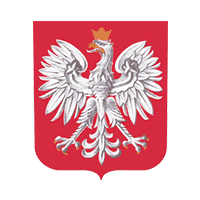Falk SELIGER, Volkmar SCHOLZ
The rich history of mining in Saxony is now reflected in many places in the form of subsidences, permeations, or damage to the infrastructure. The issue of protecting closed-down underground mines, which were even established in as early as the 15th century, is, therefore, still current and important from the point of view of ensuring public safety. The Saxon Mining Office, a specialised office, is responsible for resolving such issues, as well as for the supervision and inspection of facilities. According to legal regulations, the Saxon Mining Office receives information about a given event. Then the Office makes a comprehensive assessment of the event and classifies it in terms of how it should be processed. For cases where it is necessary to ensure an immediate protection of a facility valued up to EUR 10,000, a non-tender procedure is launched as part of the so-called "emergency intervention". In other cases, a tender procedure is launched, as a result of which companies specialised in the removal of long-term effects of historical mining are selected. In both cases, the Saxon Mining Office is responsible for protecting such facilities effectively. For these tasks to be completed, financial resources obtained from: the national budget, the 2013 flood aid fund, and the European Regional Development Fund: "Prevention of historical mining risks" are allocated. The procedure for the removal of damage is illustrated using a subsidence of the Alter Kunstschacht shaft in the König Augustus Erbstollen mine in Halsbrücke.
Dawid SZURGACZ, Piotr WIĘCEK
This paper describes the issue of increasing the flexibility of a powered roof support. The authors present an innovative method for optimising flexibility, which was developed by the engineers from the Renovation and Production Facility of Polska Grupa Górnicza S.A. as well as a method used so far, which was developed by the Central Mining Institute in Katowice. The results of the calculation of powered roof support overload as a result of rock mass shocks in a longwall according to declared and projected parameters and the results of a dynamic test of a hydraulic prop were demonstrated. The authors suggested that in order to improve the method for selecting a powered roof support for longwall excavations where there is a risk of rock mass shocks (especially those classified under the 2nd rock burst hazard class), a method for the analysis of powered roof support flexibility after its operation in a longwall is completed (and before its installation in another longwall) should be introduced and combined with station-based tests.
Agnieszka MACHNICKA
The radiation hazard in underground mines is mainly caused by the presence of radioactive radium isotopes in underground waters and sediments. Mines under the territorial jurisdiction of the District Mining Office in Katowice are characterised by small concentrations of natural radioactive isotopes Ra-226 and Ra-228 in underground sediments and waters flowing to excavations. The only exception is the Piast–Ziemowit Hard Coal Mine under PGG S.A., which features underground waters with a high radium content. To reduce radiation hazard in the work environment and to reduce its impact on the environment, a system for removal of radionuclides using barium chloride – the sorbent – from underground waters has been in operation in both parts of the mine for many years. In the Ziemowit part of the mine, the efficiency of the system varied depending on various operation phases: from 80% during commissioning (in 2006) to 36% at present. In the Piast part, however, the system enabled the average content of radium to be reduced from underground waters pumped to the ground by approx. 45%. The efficiency of approx. 45% was also achieved in the Ziemowit part when testing a pilot system for the removal of radionuclides from underground waters using zeolites.

